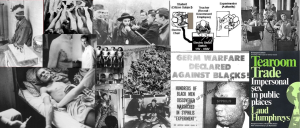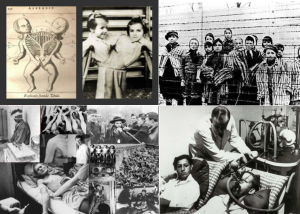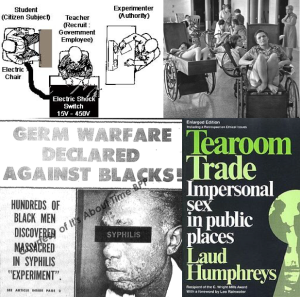An interview is a form of qualitative research that enables researchers to “obtain information that cannot be gained by observation alone” (McCutcheon, 2015), or more simply, “a conversation between a researcher and an informant/respondent” (McCutcheon, 2015). Depending on its purpose and protocol, an interview can involve multiple people in a focus group or one individual, and can be conducted in either a structured, semi-structured or unstructured form, each providing the interviewer, and therefore the interviewee, with a different level of flexibility and freedom.
When considering the topic for Assessment 2 and this final blog I originally opted to continue on from the first blog required in BCM 210, in which I identified my interest in researching whether increased exposure to violent media content desensitised young people to violence and even promoted violent behaviour. However, I have instead elected to pursue a very different but equally interesting issue: the media’s contribution to the reappropriation of the word “nigger”, otherwise known as the “N word”.
My first two survey questions were structured interview questions adapted from my group’s questionnaire that aimed to introduce the interviewees to the topic and break down any discomfort or timidness preventing them from responding honestly about the role of the “N word” in both contemporary media and culture:
- What do you perceive to be the meaning of the “N word”? Would you associate it more with camaraderie or racial persecution?
- Have you ever used the “N word” in either of these contexts?
When asked the first question, my group, who consist of a Caucasian male, Caucasian female and Asian male, were initially quite tentative to respond. In order to combat this I had each of them say the word out loud and then describe what they thought it meant after having said it, which seemingly removed the elephant in the room and freed the group members up to talk more openly. It was then that each member of the group confessed to having used the word before in the context of camaraderie.
The following two questions were far more open-ended in nature, allowing the interviewees to give more personalised answers:
- Are you exposed to the use of the “N word” in the media that you regularly consume? If so, in what context is it used?
- Do you think that there is a relationship between the increased presence of the “N word” in the media and the changing role of the “N word” in the society in which you live?
The group then proceeded to engage in a highly constructive discussion about their experiences with the “N word”, bringing up examples of how the media that they consume has desensitised them to the term and even influenced the frequency of their use of the term. These examples included Quentin Tarantino’s Django Unchained (2012), gangsta rap artists such as Tupac and even specific songs such as Jay-Z and Kanye West’s Niggas in Paris (2011). Examples of individuals who had been shamed by the media for their use of the “N word”, including Jeremy Clarkson, Paula Deen and Donald Sterling, were also brought up in the group’s discussion, allowing the group to reconsider the discriminatory and culturally divisive power of this word that still exists in modern society despite its increased use and changing role.
This interview was a highly constructive experience that enabled me to gain a greater understanding of how different types of questions can vary in their ability to promote honest, useful responses from interviewees.
Reference List:
Carter, S & West, K 2011, ‘Niggas in Paris’, in Watch the Throne, Roc-A-Fella/Roc Nation/Def Jam.
McCutcheon, M 2015, Lecture 6: Interviews, Focus Groups, University of Wollongong, Wollongong, pp 10.
Tarantino, Q 2012, Django Unchained, Columbia Pictures.


